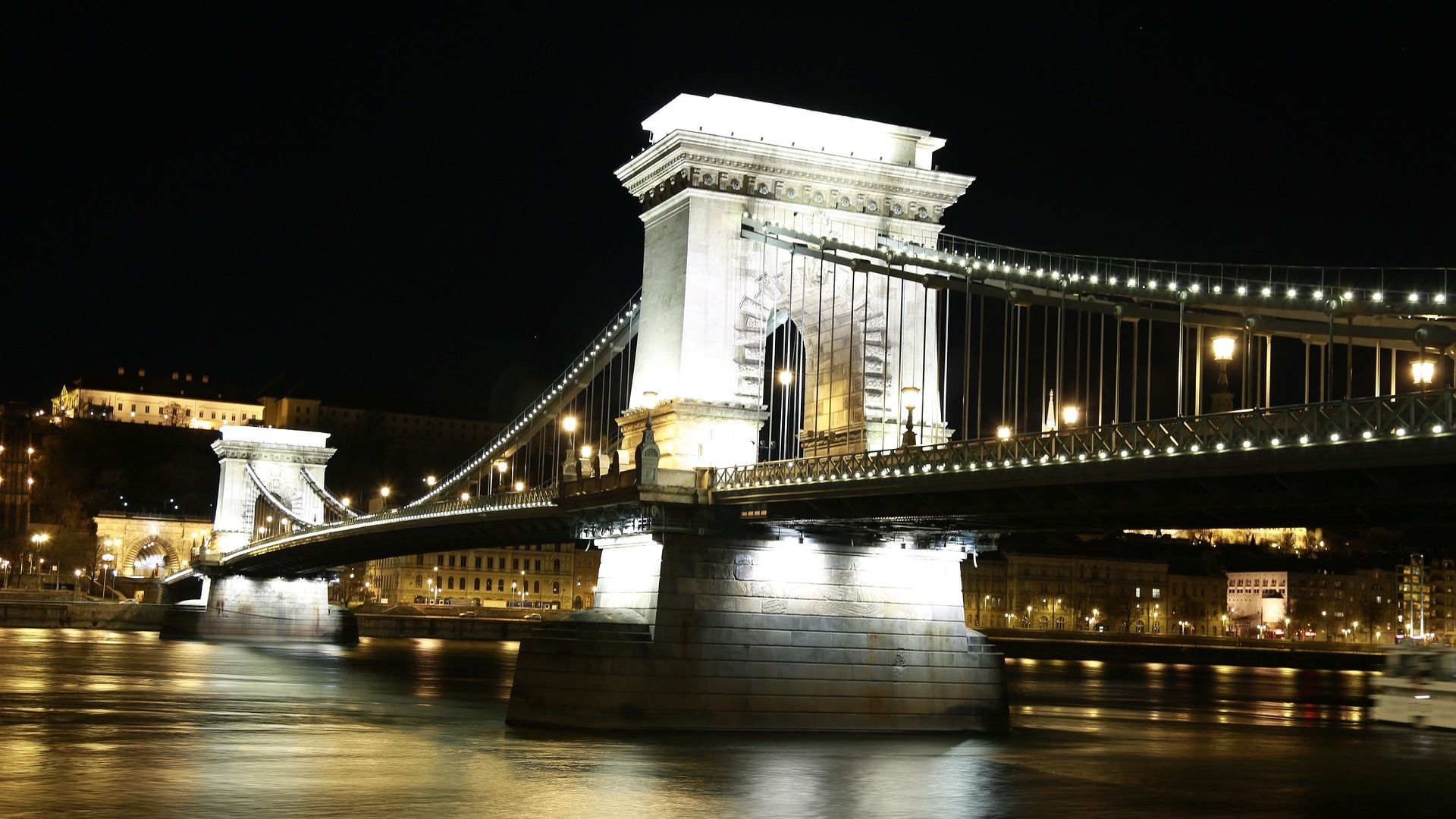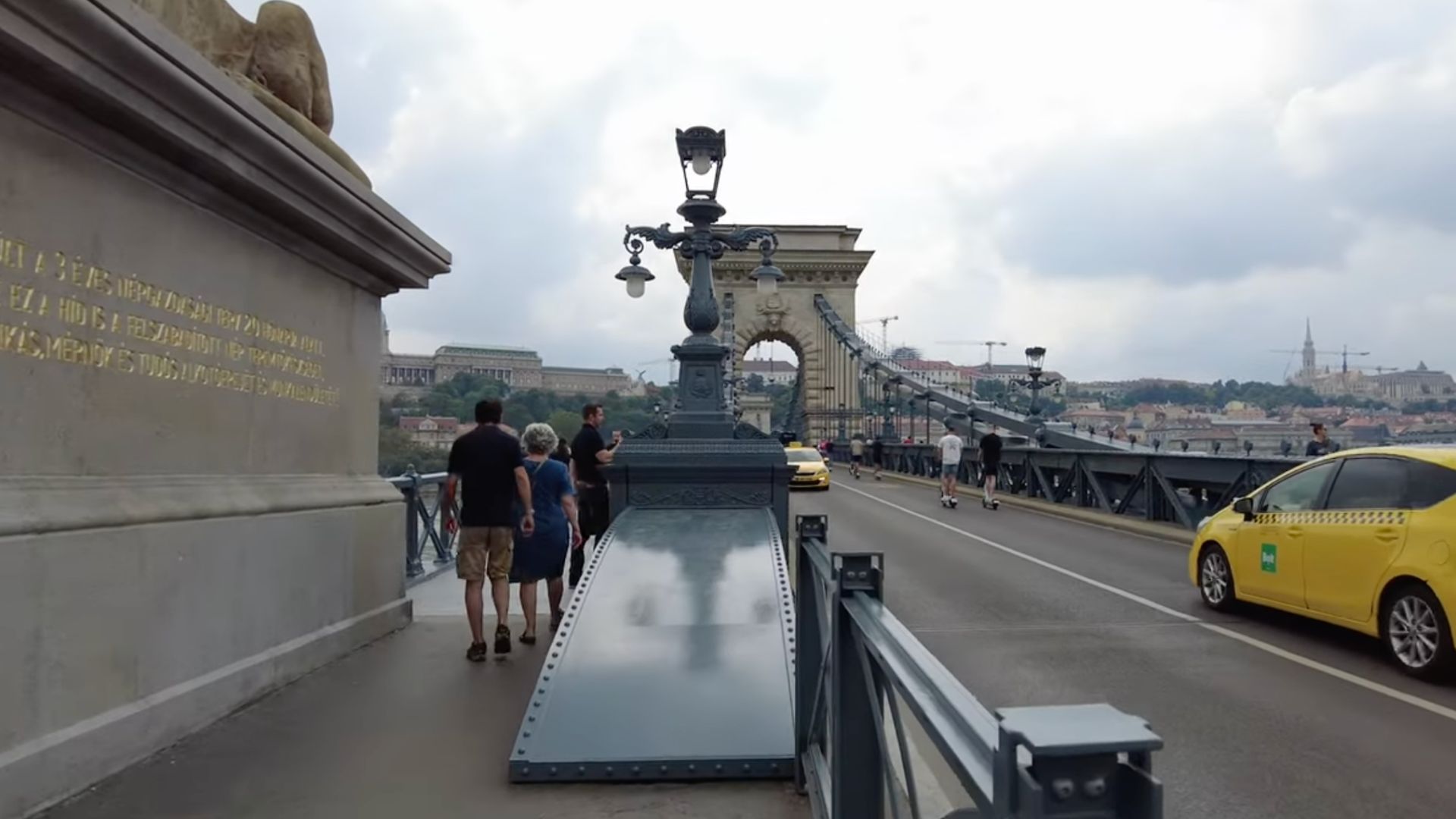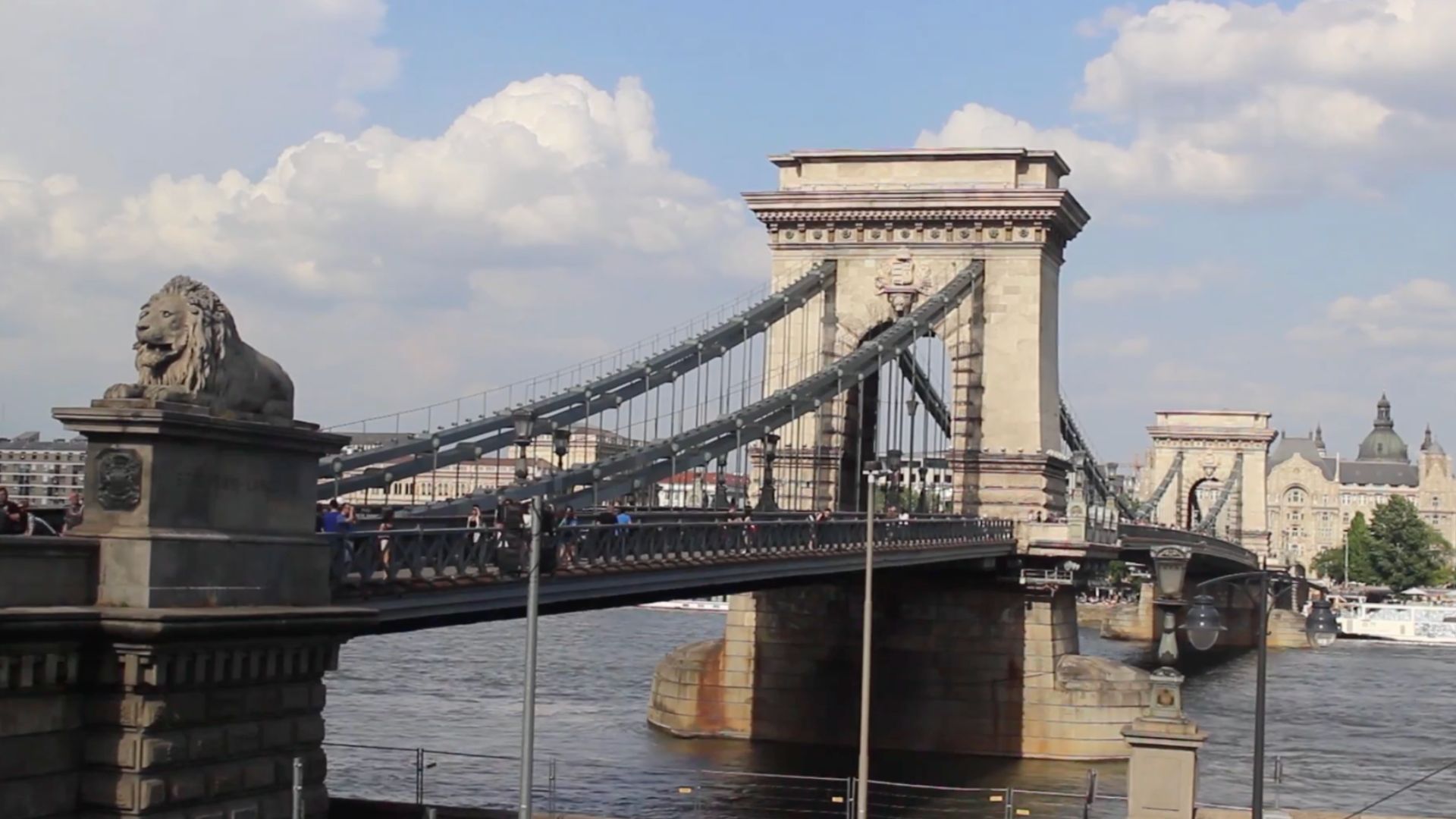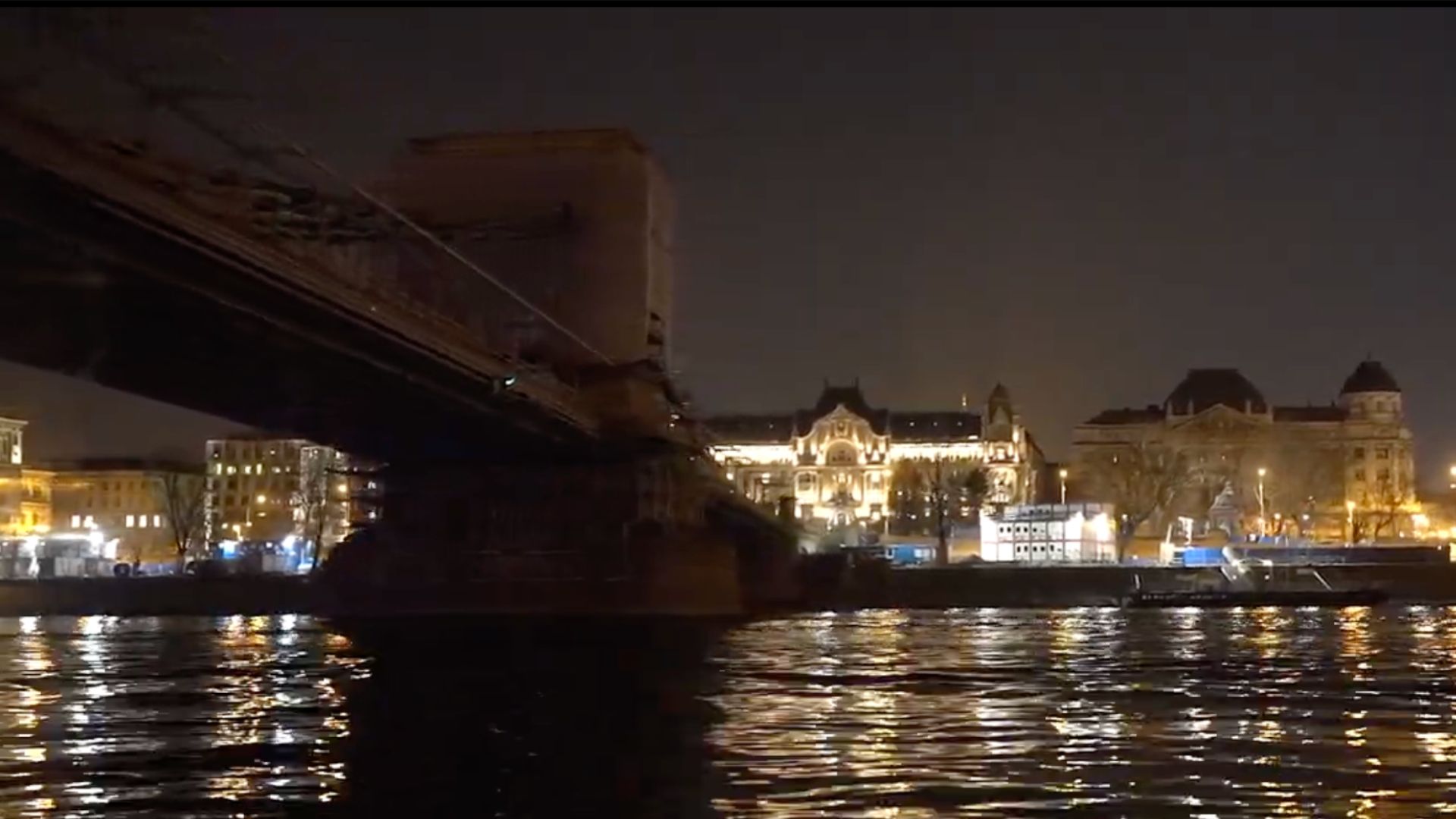The Széchenyi Chain Bridge, with its majestic lion statues and stunning views over the Danube, is a symbol of Budapest – it’s a must-visit site for anyone wanting to experience the heart and soul of this vibrant city truly.

Highlights
- Stroll across the majestic Széchenyi Chain Bridge and take in breathtaking views of the Danube River and the city’s skyline.
- Admire this historic bridge’s intricate design and engineering, a true architectural marvel connecting Buda and Pest.
- Capture stunning photographs of the bridge illuminated at night, creating a magical ambiance on the river.
What to see and do
Discover the best experiences around the Széchenyi Chain Bridge, from iconic landmarks to scenic spots.
Walk Across the Bridge

One of the must-do experiences in Budapest is walking across the iconic Széchenyi Chain Bridge. Imagine stepping onto this historic structure and feeling the gentle breeze from the Danube River as you take in the panoramic views of the city. This isn’t just any bridge; it’s a vital connector between the hilly Buda and the flat Pest, symbolizing unity and harmony.
As you stroll, you’ll appreciate the intricate details of the architecture. The bridge’s robust chains and stone lions have stood the test of time, offering a glimpse into Budapest’s rich past. I always recommend taking a leisurely walk to soak in the ambiance and marvel at the surrounding scenery. Trust me, it’s a walk you won’t forget.
The views from the Széchenyi Chain Bridge are nothing short of breathtaking. To your left, you’ll see the majestic Buda Castle, perched high on the hill, while to your right, the grand Parliament Building stands proudly along the riverbank. The shimmering Danube River flows beneath you, adding to the city’s charm.
For the best experience, consider visiting early in the morning or around sunset. These times offer optimal lighting for photography and fewer crowds, allowing you to savor the moment. And don’t miss the nighttime illumination of the bridge; the twinkling lights create a magical atmosphere that’s perfect for a romantic evening stroll.
Take Some Snaps

If you’re a photography enthusiast, you’ll find plenty of spots around the Széchenyi Chain Bridge to capture memorable shots. The lions at either end of the bridge are iconic and make for fantastic photos. For an unforgettable image, try framing the bridge with Buda Castle or the Parliament Building in the background.
Here are some tips for capturing the best photos:
- Early morning: Soft light and fewer people make for serene and beautiful shots.
- Evening: The dramatic lighting as the city lights up offers a different but equally stunning perspective.
- Wide-angle lenses: Use these to capture the full grandeur of the bridge and its surroundings.
Explore the Surrounding Area
Buda Castle
From the Széchenyi Chain Bridge, it’s just a short walk to the historic Buda Castle. This UNESCO World Heritage Site is a treasure trove of history and culture. Within the castle complex, you’ll find the Hungarian National Gallery and the Budapest History Museum, each offering a deep dive into Hungary’s rich heritage.
Parliament Building
A stone’s throw from the bridge is the Parliament Building, an architectural marvel and the seat of Hungarian governance. I highly recommend taking a guided tour to learn about the building’s history and significance. Just a heads-up: it’s best to book your tour in advance to secure a spot.
Danube Promenade
For a scenic walk, head to the Danube Promenade. This path offers stunning river views and takes you past several important monuments. One notable stop is the Shoes on the Danube Bank memorial. This poignant site commemorates the Jews who were killed during World War II, and it’s a deeply moving experience.
Take a River Cruise

Seeing Budapest from the water is an experience like no other. Various river cruises depart from near the Széchenyi Chain Bridge, offering unique perspectives of the city’s landmarks.
Different Cruise Options
There are several cruise options to choose from:
- Daytime sightseeing cruises: Perfect for those who want to see the city’s landmarks in the daylight.
- Evening cruises with dinner: Enjoy a meal as you glide along the Danube, with the city’s lights reflecting on the water.
- Specialized themed cruises: For something different, try a themed cruise that caters to specific interests.
I personally love the evening cruises. There’s something magical about watching Budapest light up as you drift along the river. The reflections on the Danube create a mesmerizing scene that’s simply unforgettable.
View all Budapest cruises here!
Directions
To reach the iconic Széchenyi Chain Bridge in Budapest, you have several convenient options. By bus, you can take Bus Line 16 from Széll Kálmán tér to Deák Ferenc tér, with a stop at Clark Ádám tér near the Buda end of the bridge, or Bus Line 105 from Gyöngyösi utca M to Apor Vilmos tér, stopping at Széchenyi István tér on the Pest end.
Metro riders can hop on Metro Line 1 to Vörösmarty tér, a brief 5-10 minute walk from the bridge, or Metro Line 2 to Kossuth Lajos tér or Batthyány tér, with both stops within a 10-15 minute walk.
For a scenic tram ride, Tram Line 2 travels along the Pest side of the Danube, stopping at Eötvös tér, just a 5-minute walk away. Alternatively, you can walk directly from Deák Ferenc tér or Vörösmarty tér, enjoying landmarks like the Four Seasons Hotel and St. Stephen’s Basilica along the way.
Did you know that: (4 Intriguing Facts about Széchenyi Chain Bridge!)
- The Széchenyi Chain Bridge was the first permanent bridge to connect Buda and Pest, the two cities that make up Budapest. Before its construction, people had to use ferries or wait until the Danube froze in winter to cross the river.
- The bridge was named after István Széchenyi, a major supporter of its construction, who had the idea for the bridge after being stuck on the wrong side of the river due to a winter freeze, causing him to miss his father’s funeral.
- The lions guarding the bridge’s ends are iconic Budapest landmarks. However, local legend says that the sculptor, János Marschalkó, forgot to include the lions’ tongues, and when this was pointed out during the bridge’s unveiling, he was so embarrassed he jumped into the Danube! This story, however, is not true — if you look closely, you can see the lions’ tongues.
- The Széchenyi Chain Bridge was almost entirely destroyed during World War II by retreating German forces. The bridge was rebuilt and reopened in 1949, exactly 100 years after its original opening.
History
The Széchenyi Chain Bridge, named after István Széchenyi, a major supporter of its construction, is one of Budapest’s most iconic landmarks. Let’s take a stroll down memory lane to uncover the bridge’s rich history:
- 1839: The first stone of the bridge is laid in the presence of Archduke Joseph, Palatine of Hungary. This marked the beginning of a major engineering project spearheaded by English engineer William Tierney Clark.
- 1849: The Széchenyi Chain Bridge is officially opened, becoming the first permanent bridge to connect the two cities of Buda and Pest. It was a grand spectacle with the first person to cross the bridge being none other than the Hungarian nobleman who initiated its construction, István Széchenyi.
- 1857: The bridge becomes toll-free. Before this, crossing the bridge was quite a costly affair!
- 1873: The cities of Buda and Pest are officially unified, with the Chain Bridge playing a significant role in this unification.
- 1945: The bridge is blown up by German troops during World War II, leaving only the towers standing. This was a dark chapter in the bridge’s history.
- 1949: A reconstructed version of the bridge is inaugurated exactly 100 years after the original bridge was opened. This was an important moment in the post-war recovery of Budapest.
- 2001: The bridge undergoes a significant renovation to restore it to its former glory. This included the installation of new illumination that highlights the bridge’s architectural beauty at night.
- Present Day: The Széchenyi Chain Bridge is a must-visit sight for anyone visiting Budapest, offering stunning views of the Danube River and the city’s skyline. It’s also the venue for numerous cultural events and festivals throughout the year.
FAQ
Can you walk over the Széchenyi Chain Bridge?
Yes, you can walk over the Széchenyi Chain Bridge. It offers a pedestrian walkway on both sides, providing breathtaking views of the Danube River and the stunning architecture of Budapest.
How long is the Széchenyi Chain Bridge?
The Széchenyi Chain Bridge spans approximately 375 meters (1,230 feet) in length, making it one of the most iconic bridges in Budapest.
What is the history behind the Széchenyi Chain Bridge?
The Széchenyi Chain Bridge was inaugurated in 1849 and was the first permanent bridge to connect Buda and Pest. It was named after Count István Széchenyi, who was a prominent advocate for its construction.
Are there any fees to cross the Széchenyi Chain Bridge?
No, there are no fees to cross the Széchenyi Chain Bridge. Both pedestrians and vehicles can cross the bridge for free.
What are the best times to visit the Széchenyi Chain Bridge?
The Széchenyi Chain Bridge is spectacular at any time of day, but it is particularly enchanting during sunrise and sunset. At night, the bridge is beautifully illuminated, offering a magical view of Budapest’s skyline.
Map & Address
Széchenyi Chain Bridge (Széchenyi Lánchíd)
Address: Széchenyi István tér, Budapest, 1051, Hungary
